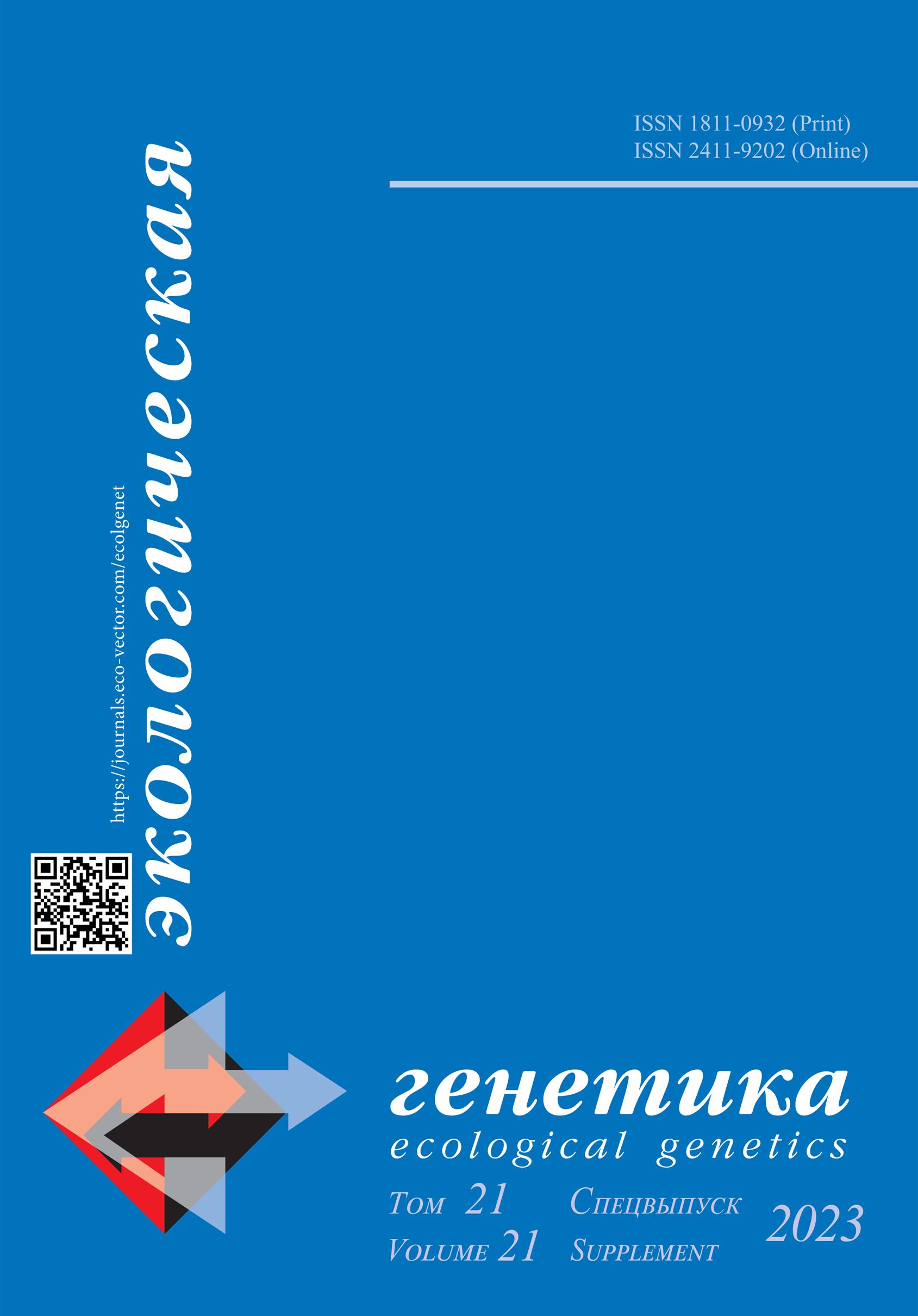Characteristics of root endophytic fungi communities associated with genetically modified plants
- Авторы: Sokornova S.V.1, Mandrik-Litvinkovich M.N.2, Matveeva T.V.1
-
Учреждения:
- Saint Petersburg State University
- State Research and Production Holding “Chemical synthesis and biotechnologies”
- Выпуск: Том 21 (2023): Спецвыпуск
- Страницы: 64-65
- Раздел: «ГМО: ИСТОРИЯ, ДОСТИЖЕНИЯ, СОЦИАЛЬНЫЕ И ЭКОЛОГИЧЕСКИЕ РИСКИ»
- Статья получена: 19.08.2023
- Статья одобрена: 05.09.2023
- Статья опубликована: 04.12.2023
- URL: https://journals.eco-vector.com/ecolgenet/article/view/568501
- DOI: https://doi.org/10.17816/ecogen568501
- ID: 568501
Цитировать
Полный текст
Аннотация
Root endophytic fungi (EF) spend at least parts of their life cycle inside plant tissues without apparent harm to the host. There is a hypothesis that the endophytic lifestyle is a common strategy for most fungi and they have endophytic ancestors [1]. By receiving habitat and nutrients EF can increase the solubility of nutrients in the plant rhizosphere, stimulate plant growth, and activate the plant’s systemic resistance to stress. One of the alternatives to the use of pesticides is the use of resistant transgenic plants, but the potential effects of crop modifications on their associated microorganisms are poorly studied.
The EF communities of transgenic lines of cotton, sugar cane, and maize containing the expressed Cry1 protein from Bacillus thuringiensis were compared with communities of non-transgenic plants. There were no significant differences in the composition of the EF community [2, 3]. The introduction of phosphinothricin-N-acetyltransferase and imazapyr herbicide resistance genes for corn and sugar cane also did not affect on EF communities but did affect the bacterial community [3, 4]. The similar effect was observed for transgenic maple plants [5]. The stage of plant development had a more significant effect on EF community than the fact of transformation itself [1].
We believe that the fungal community is more conservative and the introduction of herbicide resistance or toxin synthesis genes into the plant genome has a significantly lesser effect on EF community than on the bacterial one.
Ключевые слова
Полный текст
Root endophytic fungi (EF) spend at least parts of their life cycle inside plant tissues without apparent harm to the host. There is a hypothesis that the endophytic lifestyle is a common strategy for most fungi and they have endophytic ancestors [1]. By receiving habitat and nutrients EF can increase the solubility of nutrients in the plant rhizosphere, stimulate plant growth, and activate the plant’s systemic resistance to stress. One of the alternatives to the use of pesticides is the use of resistant transgenic plants, but the potential effects of crop modifications on their associated microorganisms are poorly studied.
The EF communities of transgenic lines of cotton, sugar cane, and maize containing the expressed Cry1 protein from Bacillus thuringiensis were compared with communities of non-transgenic plants. There were no significant differences in the composition of the EF community [2, 3]. The introduction of phosphinothricin-N-acetyltransferase and imazapyr herbicide resistance genes for corn and sugar cane also did not affect on EF communities but did affect the bacterial community [3, 4]. The similar effect was observed for transgenic maple plants [5]. The stage of plant development had a more significant effect on EF community than the fact of transformation itself [1].
We believe that the fungal community is more conservative and the introduction of herbicide resistance or toxin synthesis genes into the plant genome has a significantly lesser effect on EF community than on the bacterial one.
Об авторах
Sofia Sokornova
Saint Petersburg State University
Email: mymryk@gmail.com
ORCID iD: 0000-0001-6718-4818
SPIN-код: 3223-0513
Cand. Sci. (Biol.), Leading Researcher; All-Russian Institute of Plant Protection
Россия, Saint PetersburgMaryna Mandrik-Litvinkovich
State Research and Production Holding “Chemical synthesis and biotechnologies”
Email: mandryk_maryna@tut.by
ORCID iD: 0000-0003-1182-0031
SPIN-код: 1110-8903
Head of Department
Белоруссия, MinskTatiana Matveeva
Saint Petersburg State University
Автор, ответственный за переписку.
Email: radishlet@gmail.com
ORCID iD: 0000-0001-8569-6665
SPIN-код: 3877-6598
Dr. Sci. (Biology), Professor, Department of Genetics
Россия, Saint PetersburgСписок литературы
- Bhunjun CS, Phukhamsakda C, Hyde KD, et al. Do all fungi have ancestors with endophytic lifestyles? Fungal Divers. 2023. doi: 10.1007/s13225-023-00516-5
- de Souza Vieira PD, de Souza Motta CM, Lima D, et al. Endophytic fungi associated with transgenic and non-transgenic cotton. Mycology. 2011;2(2):91–97. doi: 10.1080/21501203.2011.584390
- da Silva DA, Cotta SR, Vollú RE, et al. Endophytic microbial community in two transgenic maize genotypes and in their near-isogenic non-transgenic maize genotype. BMC Microbiol. 2014;14:332. doi: 10.1186/s12866-014-0332-1
- Romão-Dumaresq AS, Dourado MN, Fávaro LC, et al. Diversity of cultivated fungi associated with conventional and transgenic sugarcane and the interaction between endophytic Trichoderma virens and the host plant. PLoS One. 2016;11(7):e0158974. doi: 10.1371/journal.pone.0158974
- Huang Y, Dong Y, Ren Y, et al. Niches and seasonal changes, rather than transgenic events, affect the microbial community of Populus × euramericana “Neva”. Front Microbiol. 2022;12:805261. doi: 10.3389/fmicb.2021.805261
Дополнительные файлы










